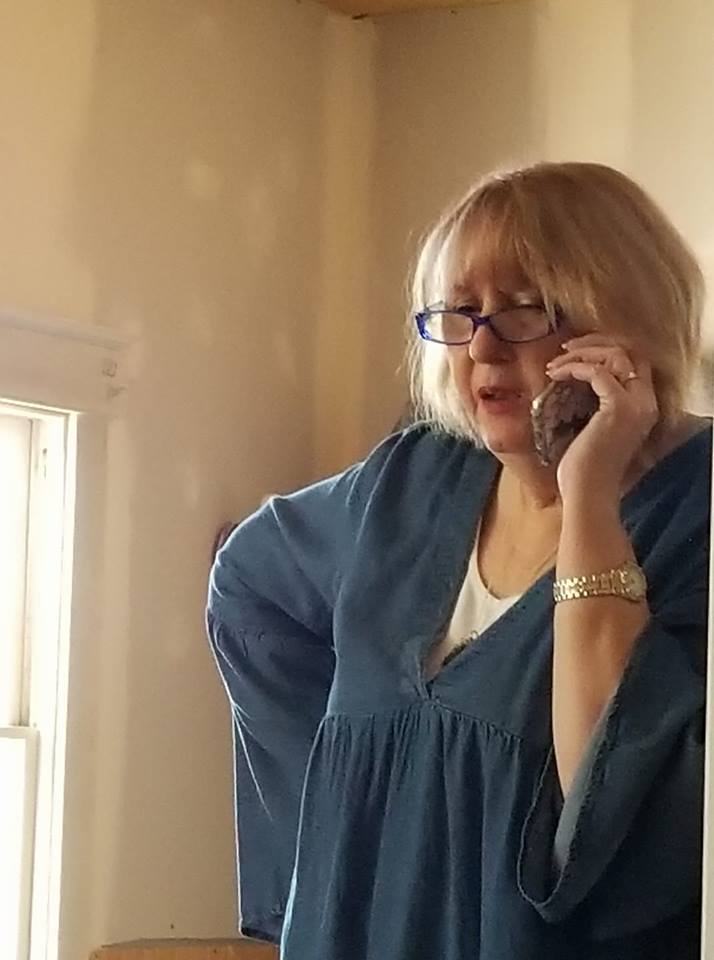Milia – those little white bumps
 Milia are hard, white bumps that appear on the face, often around the eyes, nose and also on the chest. You may have heard of them referred to as “milk spots.” Milia look like whiteheads, but they are different.
Those bumps are actually keratin-filed cysts which are harmless, although unsightly. Newborns frequently present with milia at birth, yet they disappear within a few weeks. This type of milia is called primary milia, probably where the term “milk bumps” came from. The other form of milia can affect people of all ages and last for months or years. This is known as secondary milia.
Humans shed 30,000 skin cells every day. In secondary milia, the dead skin accumulates under the epidermis, the outer layer of the skin, because the skin has become thicker making it impossible for the dead skin to get through. This results is small, hard, pearl-like cysts. Factors that contribute to thicker skin include use of heavy, pore-clogging skin care products, sun damage, blistering injuries, and long-term use of steroid creams and other skin injuries. Milia differ from acne as it does not get infected after some time like acne does.
It is important with this condition to avoid sun exposure since this thickens the dermis. Heavy cosmetics and oil-based cosmetics should also be avoided. Some professional treatments that may be helpful include microdermabrasion and glycolic acid peels. Should you opt for either of those treatments, make certain your professional is skilled in the procedures since permanent scarring may occur. Also, never pick or try squeezing these annoying bumps as you will most likely end up with scarring.
There are some home treatments you can try to treat milia:
Milia are hard, white bumps that appear on the face, often around the eyes, nose and also on the chest. You may have heard of them referred to as “milk spots.” Milia look like whiteheads, but they are different.
Those bumps are actually keratin-filed cysts which are harmless, although unsightly. Newborns frequently present with milia at birth, yet they disappear within a few weeks. This type of milia is called primary milia, probably where the term “milk bumps” came from. The other form of milia can affect people of all ages and last for months or years. This is known as secondary milia.
Humans shed 30,000 skin cells every day. In secondary milia, the dead skin accumulates under the epidermis, the outer layer of the skin, because the skin has become thicker making it impossible for the dead skin to get through. This results is small, hard, pearl-like cysts. Factors that contribute to thicker skin include use of heavy, pore-clogging skin care products, sun damage, blistering injuries, and long-term use of steroid creams and other skin injuries. Milia differ from acne as it does not get infected after some time like acne does.
It is important with this condition to avoid sun exposure since this thickens the dermis. Heavy cosmetics and oil-based cosmetics should also be avoided. Some professional treatments that may be helpful include microdermabrasion and glycolic acid peels. Should you opt for either of those treatments, make certain your professional is skilled in the procedures since permanent scarring may occur. Also, never pick or try squeezing these annoying bumps as you will most likely end up with scarring.
There are some home treatments you can try to treat milia:
- Facial Sauna
- Honey
- Spread raw honey on your face and leave it on for about 15 minutes then rinse it off. Repeat daily until you see improvement.
- Mix 2 tablespoons of honey with one tablespoon of jojoba oil. Apply it on your face and wash it off after 15-20 minutes. Repeat daily or 3-4 times a week until you see improvement.
- You could try adding 1 tablespoon of sugar and 3 tablespoons of oatmeal to honey and jojoba oil for a facial scrub. Use it gently, scrub for several minutes and rinse. You could repeat once a twice a week but be careful to not overdo exfoliating.
- Sandalwood and Rose Water
- Mix 2 tablespoons of sandalwood powder with enough rose water to make a smooth paste.
- Spread the paste evenly on your skin and leave it on for about 15 minutes.
- Rinse with cool water and pat dry.
- Repeat daily for a few weeks.
- Pomegranate Peel Powder (available on Amazon for about $33.00)
- Gently rub the paste on your face and leave on for 15-20 minutes.
- Rinse and repeat a few times a week until the bumps diminish or disappear.
- Sugar Scrub
- Squeeze the juice of ¼ piece of lemon and mix it with 2 tablespoons of granulated sugar and 1 teaspoon of olive oil.
- Gently scrub this mixture onto your skin for a few minutes, leave on for 20 minutes, then rinse.
- Repeat twice a week for a few months.
- Castor Oil
- Apply ½ teaspoon of castor oil on your face and leave it on until it is completely absorbed into the skin. Do this daily for a few months.
- You can also use equal parts of castor oil and olive oil in the same way.
- You can make a paste of 1 teaspoon of castor oil and baking soda. Leave it on the affected area(s) for a few hours and then wash it off. Repeat daily for about 2 weeks.
- Over 50% of the dust in your home is actually dead skin.
- Every minute 30,000 skin cells are shed, about 8.5 pounds annually.
- Skin regenerates itself every 27 days with more frequency during night time.
- The glands that produce wax in your ears are specialized sweat glands.
- Melanin is a protein that produces skin color.
- Melanocytes are large tentacle-like cells that produce and distribute melanin throughout your body.
- There are approximately 14 species of Fungi that live between your toes.
- The thinnest skin is found on your eyelids.
- Hair is made from a protein called Keratin.
- The thickest skin, 1.4mmdeep, is found on your feet.
- Your skin has about 1,000,000,000,000 individual bacteria.
- Babies can get acne in the first few weeks of life.
- 1 in 20 Adult women suffer from acne.
- 1 in 100 Adults suffer from acne.
- The skin covering the eye is transparent.
- Melanin is responsible for the color of your eyes.
- 4 out of 5 teenagers get some form of acne.
- 1 out of 20 Adult women suffer from acne.
- 1 out of 100 adult men suffer from acne.
- Sweat is odorless; it’s the bacteria that makes body odor.
- Lipids are natural fats that keep the outer layer of skin moist and healthy.
- Lipids can be destroyed by alcohol and detergents.
- Acne is caused by an over production of cells that line the sweat glands.
- Skin releases up to 3 gallons of sweat during hot weather.
- An average woman’s skin weighs 6.5 pounds while a man’s skin weighs nearly 12 pounds.
- Brew 5-6 black tea bags, refrigerate, soak a hand towel in the tea, and apply for 30 minutes.
- Freeze Aloe Vera in ice cube trays for instant relief.
- Mix ½ cup cornstarch with ½ cup baking soda and add to a cool bath. Soak for 30 minutes.
- Grate cucumbers; mix with milk to make a paste. Leave on for 30 minutes.
- Mix 2 egg whites with 1 tablespoon of honey and 1 tablespoon of Witch Hazel; apply.
- Spritz cool Witch Hazel.
- Make a paste of 50/50 honey and milk.
- Dab cool milk on affected areas.
- Bathe in buttermilk.
- Spritz Apple Cider Vinegar.
- Dissolve Epsom Salt or Baking Soda in water; apply with clean cloth.
- Spritz with cool water.
- Grated or blend 2 potatoes. Apply with cotton balls.
- A make and store recipe: Mix 1 tablespoon of Witch Hazel with 1 teaspoon of Aloe Vera gel into 1 tablespoon of water. Stir and let mixture infuse for 2 hours. Add 2-4 teaspoons of baking soda or cornstarch, 1-2 cups of mint leaves or peppermint oil, and 1 tablespoon of water. Cover and store in refrigerator.
1. Start wearing sunscreen. Keep some in the car so that you remember before you drive or ride.
2. Use you anti-aging products on your hands also. Serums and moisturizer can do wonders.
3. Protect your hands by wearing gloves when they will be exposed to water, such as with cleaning and dishwashing.
4. Keep your cuticles moisturized
5. Exfoliate your hands and keep moisturizer near the sink to remind you to apply each time you have your hands in water.
Q: What makes those high-priced cosmetics worth the money? A: Usually the price is driven by the percentage of active ingredients and, in many cases, the packaging is also a factor. Companies with a patent on the product ingredients list do not have to follow the concentration rule. You can check online at Cosmetics Cop to research reviews. Q: I wonder how I can tell what the shelf-life of my cosmetics is. A: Generally you can look on the back of the product for a tub opened with a number on it; 6, 12, 24, or 36. Those numbers represent the number of months the product is good for after being opened. Always remove the product from jars with a spatula or a spoon to prevent contamination from your fingers. The rule of thumb for unopened products is 3-5 years. Q: My baby was born with acne. Can you tell me how that can happen? A: Yes. Maternal hormones are transferred across the placenta at the end of the pregnancy which increases oil gland production on your baby’s skin. Baby acne usually resolves itself within a few weeks. Q: What causes lines around the mouth? A: Those deep lines around the mouth, called nasal labial folds, become more visible as we age. The ligaments around the mouth and chin loosen, allowing fatty tissue in the cheeks to sag. It is often a hereditary feature. Q: My skin tone is uneven, is there anything I can do to improve it? A: Yes. Look for products that contain alpha-hydroxy acids to remove dead layers of skin as well as kojic acid and arbutin to help inhibit hyperpigmentation. These products can help lighten age spots and reduce discoloration caused by acne. Q: What’s the big deal about squeezing my monthly pimples? A: Squeezing makes the pimples rupture internally and spread bacteria from the hair follicle into the surrounding skin, which will just prolong healing and may also lead to scarring. Views:]]>

